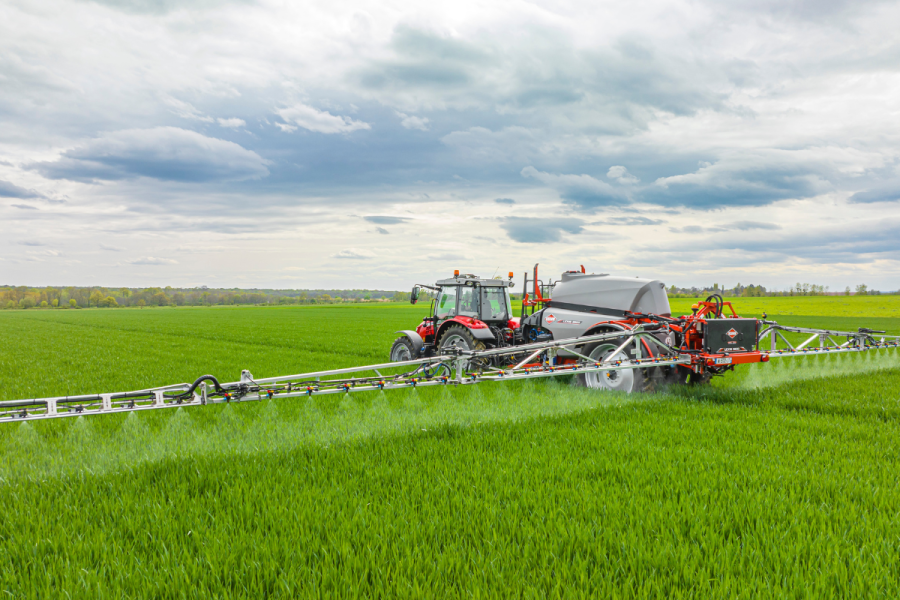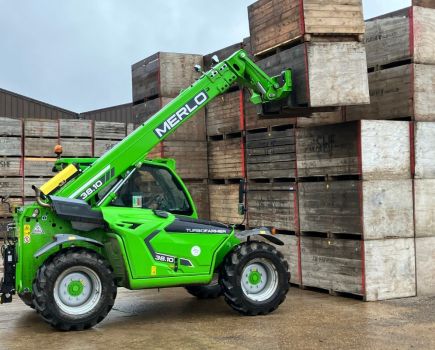Investing in a new sprayer can raise numerous questions around opting for various technological and safety options, but how are machines likely to evolve over the next few years? CPM takes a look at the key features and why they’re valuable.
By Melanie Jenkins
Technological advances in sprayers often have cost and chemical-saving or safety elements behind their invention, but it isn’t always simple to justify the investment.
And with only 22% of respondents to a recent grower survey conducted by CPM and Kuhn saying they’d want to have additional technology on their next sprayer purchase, what is holding the remaining 78% back?
According to Kuhn’s Edd Fanshawe, there could be a multitude of reasons, ranging from the cost to the understanding of the new technology available. “One response to the survey which I found surprising was that more farmers aren’t interested in spot application and individual nozzle use. Although 55% are interested, there’s a further 45% which aren’t and we’re surprised more farmers wouldn’t be able to justify the investment because going forward the pressure to reduce or optimise chemical use is likely to increase.”
On the face of the investment, Edd feels that it’s the upfront cost of the technology that is likely deterring some. “But the more this kind of technology is used on farm, the more worthwhile and value for money the investment becomes in the longer term.”
Although this kind of technology is well-known across the industry now, he feels that not many farmers and operators have been able to use or had direct exposure to spot spraying yet. “There’s only a handful of sprayers in this country that have it fitted, so it might be that there’s a lack of understanding about the difference having it can make to an operation.”
Additionally, there’s a lot of software and hardware required in a spot spraying system, which means development is likely slowed somewhat and then this links back to the cost, he explains. “But we’re at the point where the concept is right, there just has to be more awareness about what it can achieve on farm so that farmers are less reluctant to adopt it. At some point spot spraying will be the norm and I think in 10 years we’ll be seeing this technology on every new sprayer people buy because it’s fundamentally about saving money and reducing chemical use.”
Answers to the survey flagged that only 26% of respondents felt that individual nozzle control was essential, while 60% believed it to be optionally important and 15% felt it was unimportant. “Individual nozzle control will be most important to larger operations where there’s a greater benefit from having this technology.”
However, Edd had anticipated a more even split between those feeling the technology is essential and those who don’t. “There are definitely small margins to be gained by investing in individual nozzle control. Much like when adopting GPS it’s helps to prevent any overlaps by a couple of centimetres and reducing wear, with individual nozzle control it means there’s less chemical used if you’re able to shut on any sections that aren’t required. For example, you might have to spray a 1m section but because you don’t have individual nozzle control you end up having to spray across a 4m section, meaning that’s 3m of wasted chemical for that entire pass. Adopting technology such as this is all about understanding the cost benefits.”
Further technology aimed at optimising chemical use and reducing costs comes in the form of boom levelling systems. “There’s a good awareness of the impact boom levelling can have on operations, and with 78% of respondents to the survey rating it as essential it appears farmers and operators can see the benefits.”
Those operating smaller boom widths – in the region of 12m – are less likely to see the benefits of investing in this technology, but for those operating wider widths, especially when using 24m or 36m systems, the technology can make all the difference to accuracy, explains Edd.
“But boom levelling systems enable user to feel more confident going to wider widths and it might be the lack of having this technology that prevents them increasing their boom size. Because drilling width is so often dictated by sprayer width, introducing a boom levelling system might allow you to go wider than this.
“We’re also seeing an increase in windier days now than we have in the past, meaning there are fewer spraying days. But having a boom levelling system can open the spraying window wider and allow you to continue to work in conditions that likely wouldn’t be able to otherwise.
“Boom levelling means sprayers can travel at increased speeds and still maintain accuracy, so efficiency is improved, both in terms of chemical use and the area it’s possible to cover during the day. Additionally, there are a multitude of benefits aside from keeping the boom level, including reducing drift and improving accuracy of hitting targets.”
Another well-established technology, pulse width modulation, again has more benefits when fitted to larger sprayers. This technology allows users to adjust the droplet size from the cab and provides turn compensation so that there’s an equal dose across the width of the boom, meaning there are no overdosed areas on the inside of a turn or underdosed areas on the outside, explains Edd. “These systems allow the exact amount of chemical to be applied arounds corners and on bends, irrespective of how fast you’re travelling.”
Responses to the survey highlighted that a number of businesses with 5000-6000-litre sprayers were interested in the technology but felt they couldn’t justify the cost. “There might still be some hesitancy in the uptake of this technology where users haven’t seen it in practice,” says Edd. “But it might be the case that a number of farmers don’t have the hectarage to justify the investment.”
Edd believes that as farmers and operators see and experience more of the technologies on offer, the adoption will become more widespread despite the cost. “As the cost benefits and accuracy gains are realised, more and more farmers are likely to be willing to invest and in a decades time sprayers are likely to be even more technically capable than they are now.”
This article was taken from the latest issue of CPM. Read the article in full here.
For more articles like this, subscribe here.
Sign up for Crop Production Magazine’s FREE e-newsletter here.




